Abstract
A highly specific medium was developed for the enumeration of lactate-utilizing bacteria in the rumen of sheep. This medium, which contained 2.0% lactate, 2.0% Trypticase, 0.2% yeast extract, and volatile fatty acids, hemin, and trace elements in place of rumen fluid, enabled high counts (42 × 107 to 190 × 107/g of ingesta) of lactate-utilizing bacteria to be made with a high degree of specificity (96%). The medium also supported the growth of all species of predominant lactate-utilizing bacteria reported to occur in the rumen and thus is of importance for ecological studies where the incidence and influence of the different species on lactate metabolism under changing conditions in the rumen cannot be predicted. The survival rate of isolates was increased from 60 to 96% by addition to the modified maintenance medium of 40% rumen fluid in place of the volatile fatty acids, hemin, and trace elements used in the counting medium. These results, together with the slow growth of colonies in roll bottles, showed that, although highly selective, the counting medium was not optimal for the types selected.
Full text
PDF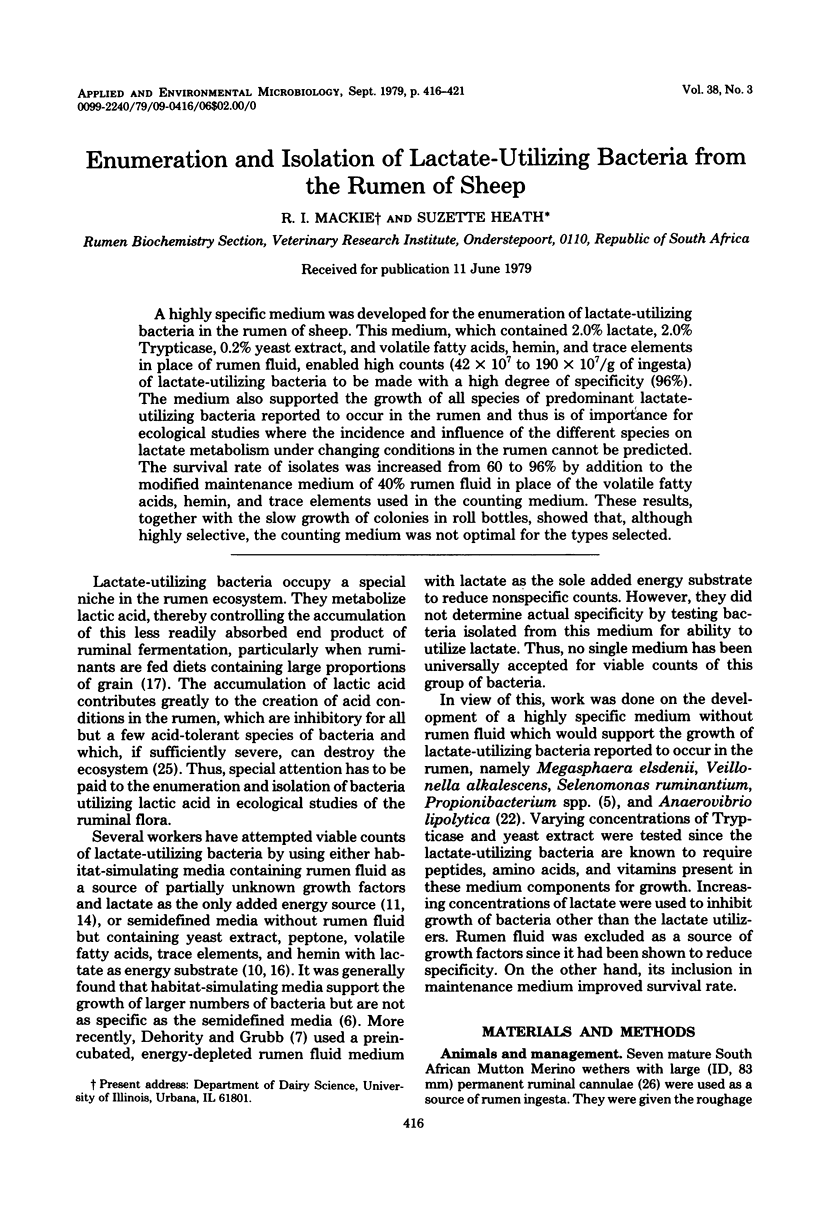
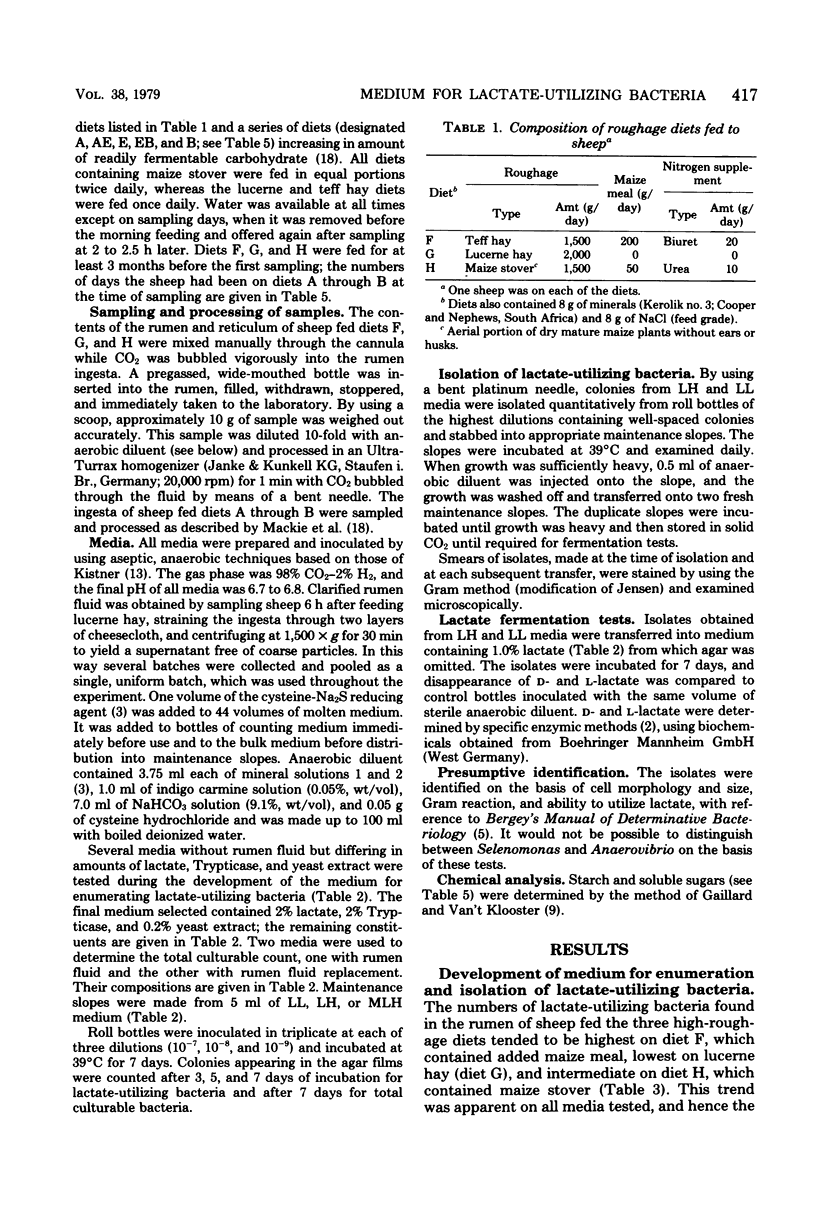
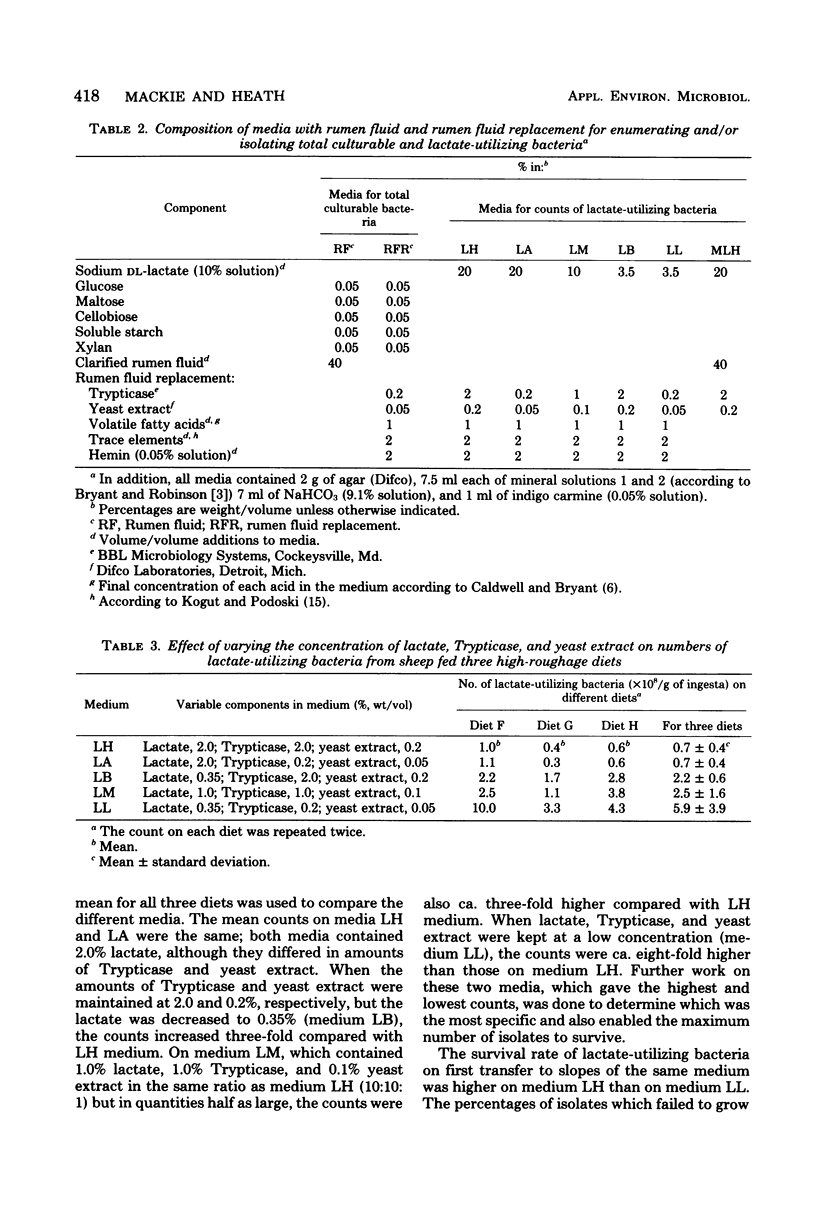
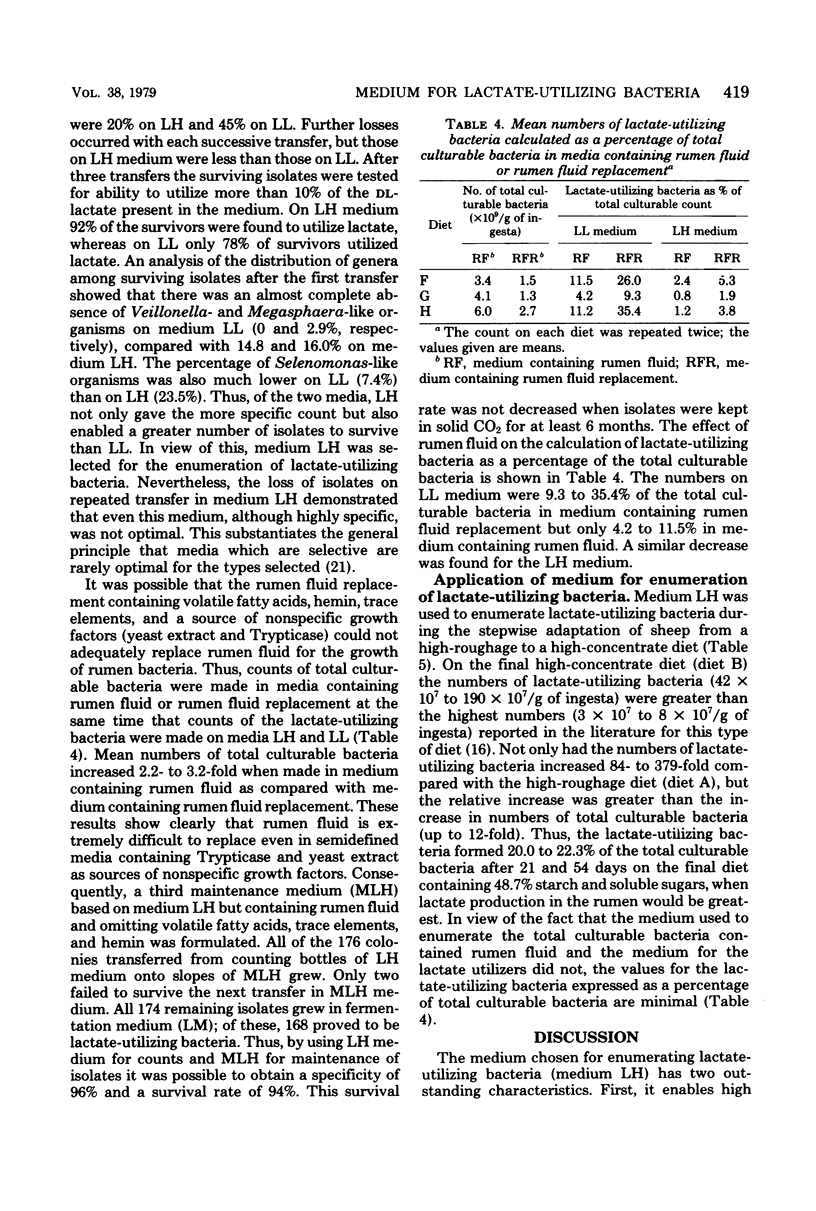
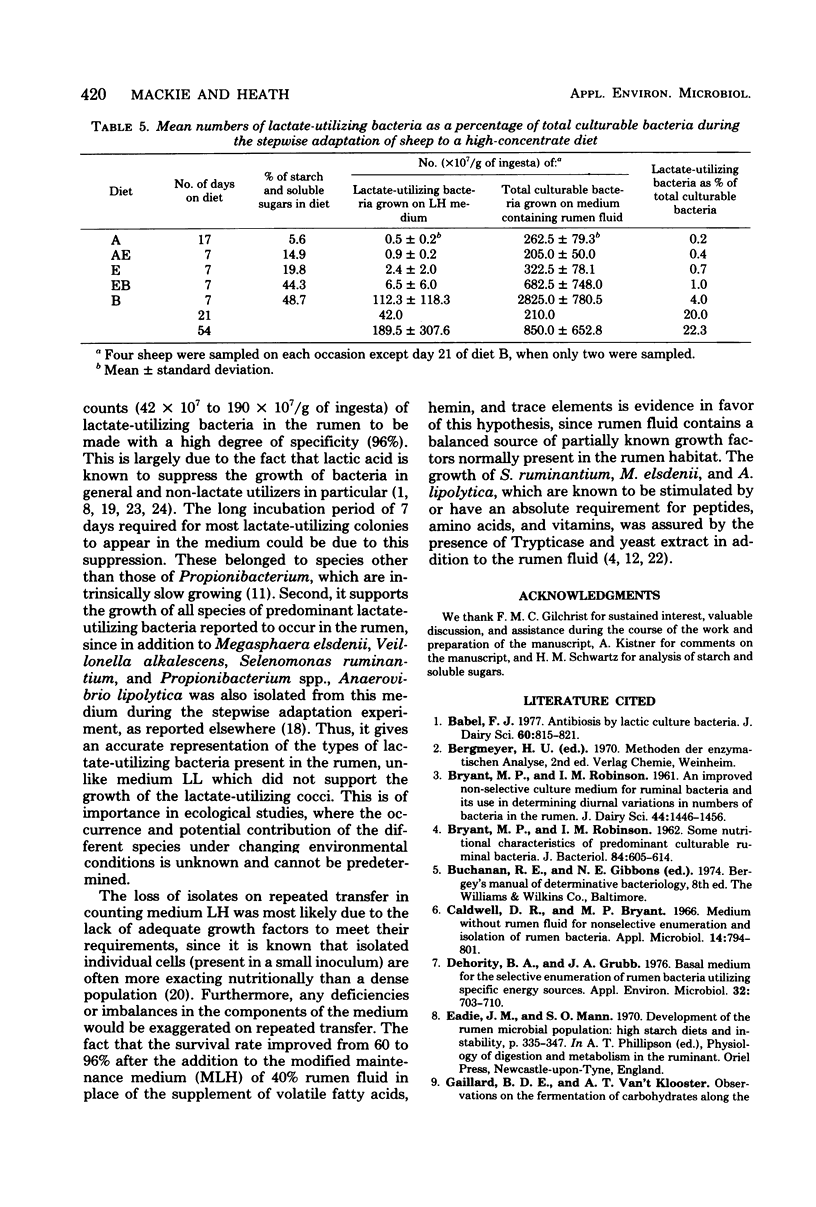
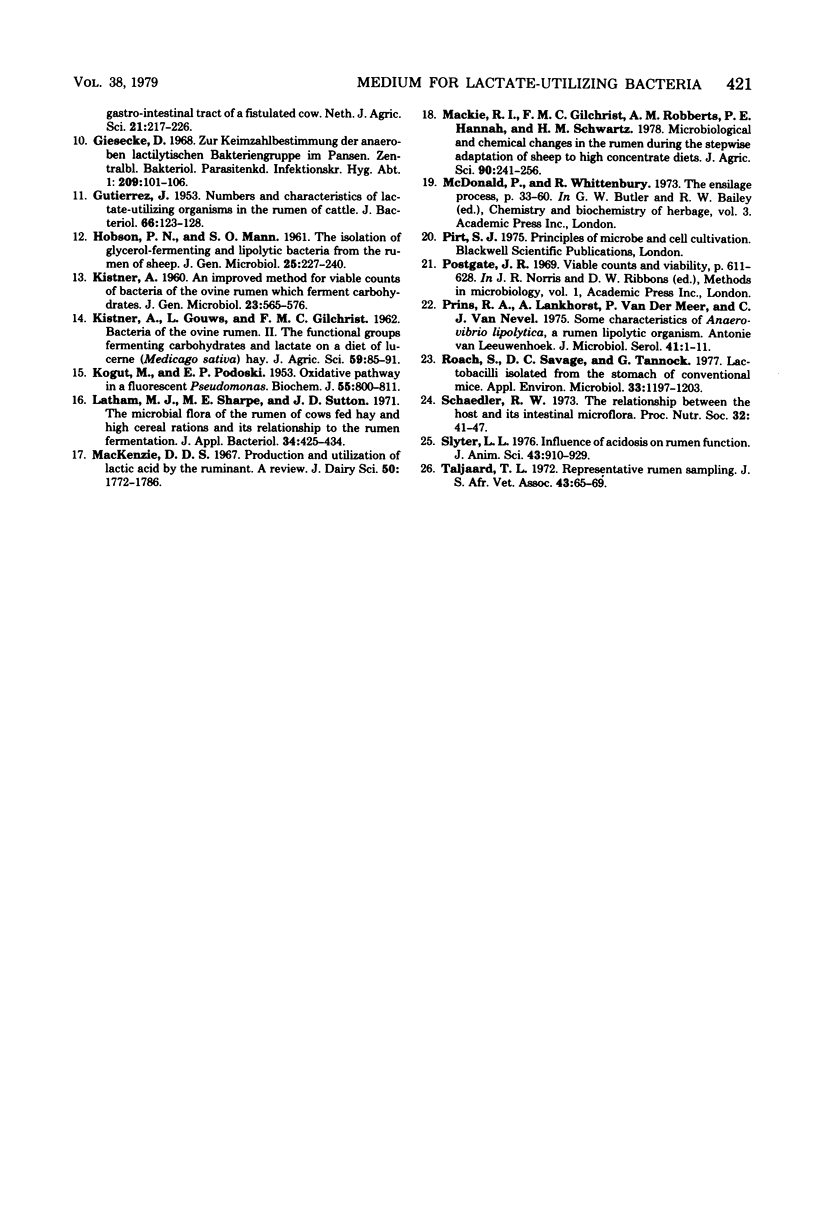
Selected References
These references are in PubMed. This may not be the complete list of references from this article.
- BRYANT M. P., ROBINSON I. M. Some nutritional characteristics of predominant culturable ruminal bacteria. J Bacteriol. 1962 Oct;84:605–614. doi: 10.1128/jb.84.4.605-614.1962. [DOI] [PMC free article] [PubMed] [Google Scholar]
- Caldwell D. R., Bryant M. P. Medium without rumen fluid for nonselective enumeration and isolation of rumen bacteria. Appl Microbiol. 1966 Sep;14(5):794–801. doi: 10.1128/am.14.5.794-801.1966. [DOI] [PMC free article] [PubMed] [Google Scholar]
- Dehority B. A., Grubb J. A. Basal medium for the selective enumeration of rumen bacteria utilizing specific energy sources. Appl Environ Microbiol. 1976 Nov;32(5):703–710. doi: 10.1128/aem.32.5.703-710.1976. [DOI] [PMC free article] [PubMed] [Google Scholar]
- GUTIERREZ J. Numbers and characteristics of lactate-utilizing organisms in the rumen of cattle. J Bacteriol. 1953 Aug;66(2):123–128. doi: 10.1128/jb.66.2.123-128.1953. [DOI] [PMC free article] [PubMed] [Google Scholar]
- Giesecke D. Zur Keimzahlbestimmung der anaeroben lactilytischen Bakteriengruppe im Pansen. Zentralbl Bakteriol Orig. 1968;209(1):101–106. [PubMed] [Google Scholar]
- HOBSON P. N., MANN S. O. The isolation of glycerol-fermenting and lipolytic bacteria from the rumen of the sheep. J Gen Microbiol. 1961 Jun;25:227–240. doi: 10.1099/00221287-25-2-227. [DOI] [PubMed] [Google Scholar]
- KOGUT M., PODOSKI E. P. Oxidative pathways in a fluorescent Pseudomonas. Biochem J. 1953 Dec;55(5):800–811. doi: 10.1042/bj0550800. [DOI] [PMC free article] [PubMed] [Google Scholar]
- Latham M. J., Sharpe M. E., Sutton J. D. The microbial flora of the rumen of cows fed hay and high cereal rations and its relationship to the rumen fermentation. J Appl Bacteriol. 1971 Jun;34(2):425–434. doi: 10.1111/j.1365-2672.1971.tb02302.x. [DOI] [PubMed] [Google Scholar]
- Mackenzie D. D. Production and utilization of lactic acid by the ruminant. A review. J Dairy Sci. 1967 Nov;50(11):1772–1786. doi: 10.3168/jds.S0022-0302(67)87715-4. [DOI] [PubMed] [Google Scholar]
- Prins R. A., Lankhorst A., van der Meer P., Van Nevel C. J. Some characteristics of Anaerovibrio lipolytica a rumen lipolytic organism. Antonie Van Leeuwenhoek. 1975;41(1):1–11. doi: 10.1007/BF02565031. [DOI] [PubMed] [Google Scholar]
- Roach S., Savage D. C., Tannock G. W. Lactobacilli isolated from the stomach of conventional mice. Appl Environ Microbiol. 1977 May;33(5):1197–1203. doi: 10.1128/aem.33.5.1197-1203.1977. [DOI] [PMC free article] [PubMed] [Google Scholar]
- Slyter L. L. Influence of acidosis on rumen function. J Anim Sci. 1976 Oct;43(4):910–929. doi: 10.2527/jas1976.434910x. [DOI] [PubMed] [Google Scholar]
- Taljaard T. L. Representative rumen sampling. J S Afr Vet Assoc. 1972 Mar;43(1):65–69. [PubMed] [Google Scholar]


